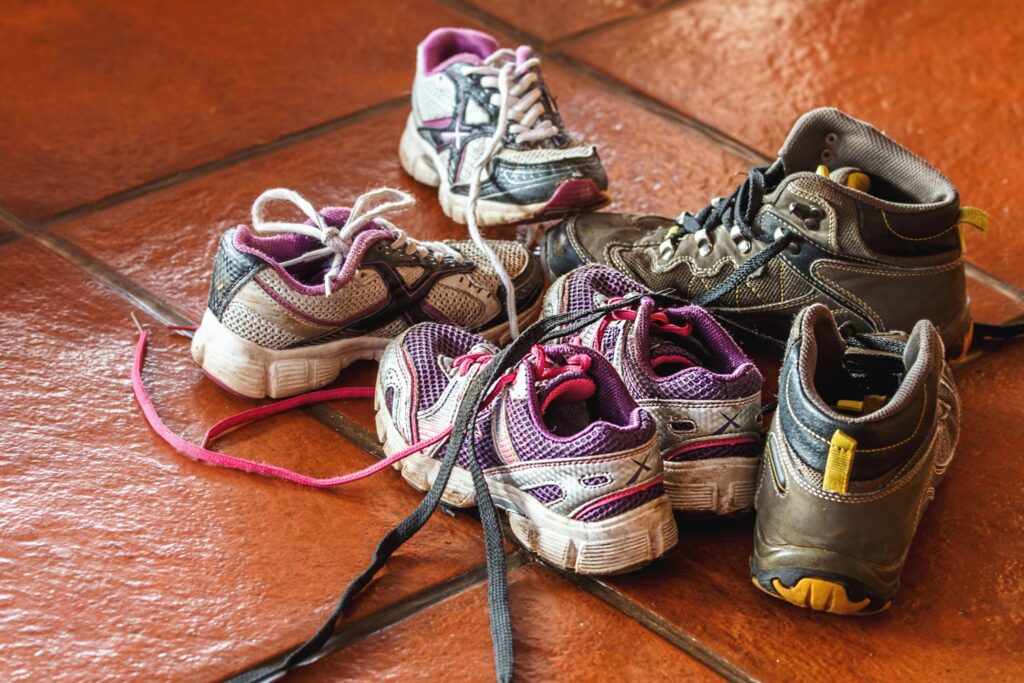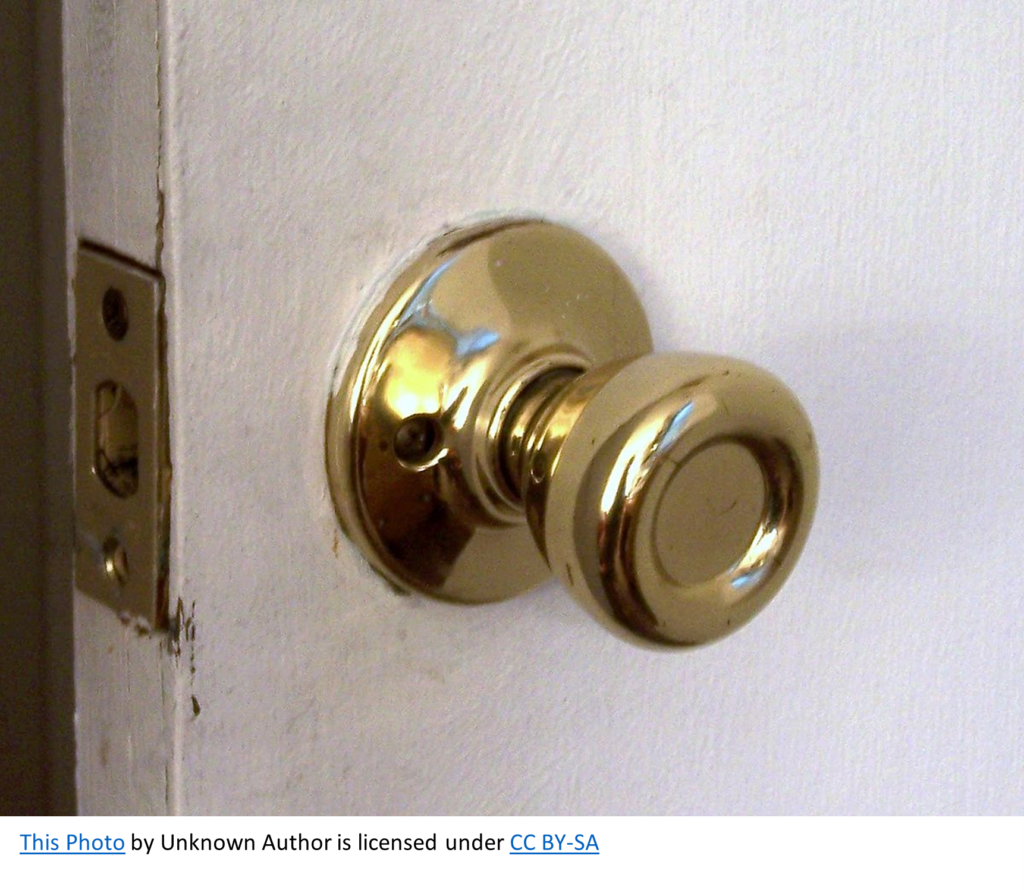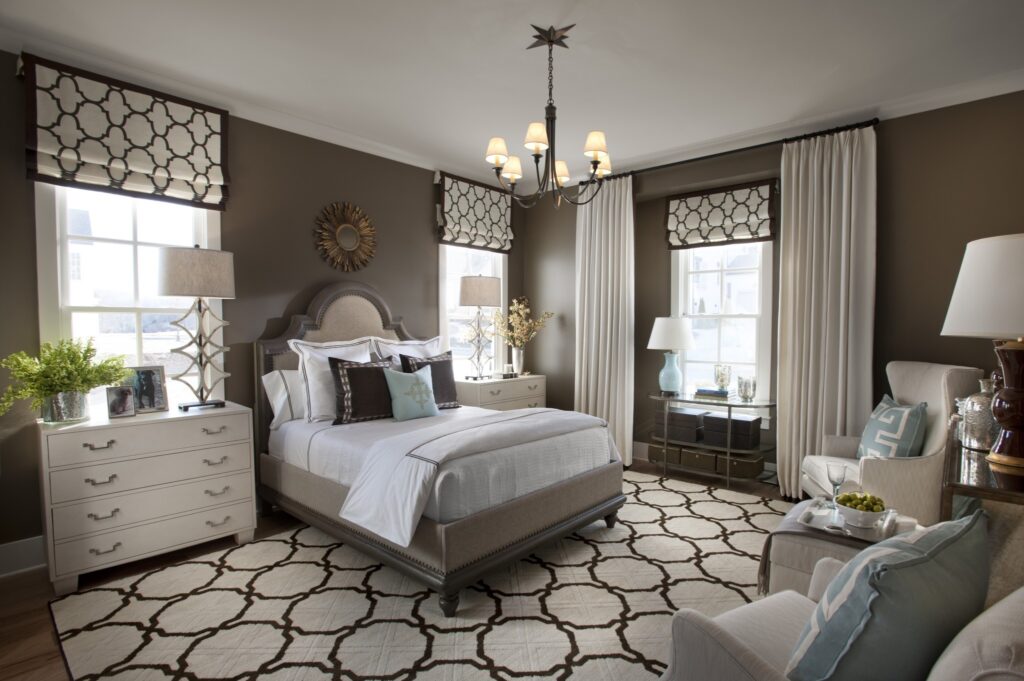Category: Home Organization
Shoes ON or OFF?

I have heard so many different debates throughout the years as to whether it makes a difference with keeping your shoes on while walking around your home or keep your shoes off. You would be amazed at some of the reasons people come up with for both.
Here is the dirty scoop on this well-debated, short-lived argument that takes place in so many homes. SHOE OFF does make a HUGE difference in the overall wellness of the flooring in your home and at a minimum, your air quality. YES, I am 100% for SHOES OFF inside your home.
I come at this from the aspect of 1-cleaning homes for over 20 years, 2-suffering from seasonal allergies, 3-raising my son who has asthma, 4-being a person who was immunocompromised for several years.
As a person with the knowledge and experience of cleaning homes for over 20 years, I have seen the impact that heavy traffic has on carpeted floors, tiled floors, hardwood floors, vinyl/laminated flooring. YES, bringing in the outside dirt/dust/grime/germs DOES leave its mark on your flooring, literally. The only way to ensure that your floors remain clean would be to constantly vacuum, dust, sweep, mop, and disinfect them on a daily. Now, this is the one thing that the average person will not do nor do they have the time to do so. The act of simply not keeping your shoes on when you enter your home greatly reduces the need to constantly clean and disinfect, and helps to extend the life of your flooring, no matter what type you have.
As a person who suffers from major seasonal allergies for every season, along with my son who also has asthma, SHOES OFF was an easy and required choice for my home. Now, did friends and family like it, NO they did not but at the end of the day, it is an issue of RESPECT. Anyone who enters your home must respect your home and follow the rules you have set in place. It was important for me to keep my floors as clean as possible so that I could control my indoor air quality as much as possible to protect my son’s respiratory health and mine. Shoes off allowed me to keep my carpets cleaner longer and reduce the number of times I had to have them cleaned each year. It also allowed me to relax more when it came to worrying about my son inhaling all those nasty things that lurk on the bottom of our shoes and having those nasty things in my carpets.
SHOES OFF was a requirement that everyone who entered my home knew about and had no choice but to respect if they wanted to enter. I simply created a cute and efficient area next to the door/entry point of my home, designed with a colored floor mat for shoe placement. Now, you may be saying that for your home this would not work, especially for large families but I would disagree. The key to make this area work, stay neat and tidy is by not keeping all your shoes there every day. This area is only for the most frequently worn shoes or the shoes you wear daily. If there are shoes there that you do not wear on a daily, they need to be removed and placed back in your closet. A simple dip in a solution of your favorite disinfectant before placing them back in the closet (wipe off the excess liquid first) can help with reducing the germ/dirt content. This area should not be a substitute for putting your shoes away in your closet, if it does, then it is time to do a purge. This will take some practice and you will have to work on finding an area near your main entry point that works with the flow of your home. At the end of the day, it is your decision as to whether your home will be a SHOES ON or SHOES OFF zone!
Cluttered Home=Cluttered Life

You see it in news feeds on Facebook. You see it on Twitter. Someone takes a picture of it and posts it on Instagram. You see a picture of it in a magazine. You see it on a 5-minute segment of your favorite daytime talk show. CLUTTER! They tell you it can be done in these few simple steps, show you the before and after pictures. Then you fall down the rabbit hole of thinking you can do it too because they made it seem so simple and the end result was perfect. Is this real? Can it be this simple? Will I achieve this same result?
The answer to those questions is yes and no. You must be realistic about your situation, lifestyle, and habits. When working with clients who want me to make the magic of decluttering their house look like that perfect picture they saw, I must let them know that decluttering is an ongoing process. It involves behavioral modification, an emotional rollercoaster ride, daily tasks, and one of the toughest of all, TIME.
Behavioral Modification: You have to figure out the WHY. Why am I constantly living in a state of clutter? You have to deal with the HOW. How can I continue to live like this? How can I make this go away? Next is the WHERE. Where do I even start? The biggest step in this process is the WHO. Who can I turn to for help? This process can and will be mentally challenging for some. It will help to keep a diary or notes on how you are feeling about the clutter in your home. As you take the journey of decluttering, the notes help you understand the underlying cause or at least guides you towards the path to figuring it out. Some can do this on their own but if you are able to afford/have access to a mental health professional, they can help guide you through this process. It is not an overnight fix and will require you to work on the WHY and HOW, which can then lead to the WHERE.
Emotional Rollercoaster: Your house has been cleaned, you are happy, and feel good about yourself. Two weeks later, you feel sad, depressed, and unhappy with the way your life is going. You have no energy and cannot figure out why. You are constantly exhausted and stressed. You stay sick but cannot pinpoint the reason why. You isolate yourself from others because you don’t want to have others see you living like this. You are now back to where you started-CLUTTERED. You feel overwhelmed when facing your clutter. Your anxiety builds up as you pull into your driveway or unlock your door to walk into your home. These emotions are real and can lead to high-stress levels. You cannot turn these emotions off at the snap of a finger, however, working on behavioral modification is key to helping with the emotional rollercoaster living in a state of constant clutter can cause.
Daily Tasks: Set a timer, schedule at least 2-3 days out of the week you will dedicate at least 10 to 15 minutes to concentrating on one area. This helps you to stay focused and keeps you on task. It is better to accomplish mini tasks/goals versus being disappointed by creating a larger mess in multiple areas of your home. Everyone in the household MUST participate in this process. If more than one person contributes to the issue, then they need to participate in the process as well.
Time: Yes, someone can come into your home and make all of the clutter disappear, but it can return just as quickly as it disappeared, especially if you haven’t taken the time to figure out WHY is it happening. I recommend to all of my clients who utilize my organization services- time, patience, daily to weekly tasks, setting up a system that works for them and their household. There is never a perfect time to get the process started, you simply have to schedule it into your Calendar of Life. It is a necessary process that you have to be involved with and committed to deal with. The timeframe will vary from person to person but do understand that time can include months to years, not just hours and weeks. You have to pace yourself and give the systems that are set up to help you time to work and be modified.
Decluttering is a process that cannot be rushed. It takes time for the clutter to build up and so it will take time to get it sorted. You have to allow yourself to open your mind by setting mini-goals and start utilizing systems that will help you stay focused and get the job done.
The Forgotten Zones

The forgotten zones are the areas and places that we tend not to think about during our daily routines of living in our homes. We walk by them and don’t even think twice about the goodies that lurk there or we say “I will get to that later” but we never do. When you have an odor in your home and you have no clue as to where it is coming from, it may possibly be coming from one of these zones! Below is a list of some of the common places that are considered the forgotten zone that we never really clean or think about cleaning until we either have to move an item out of the way to replace it, paint or remodel.
Bathroom exhaust fan, bathroom air vents, behind/underneath appliances, behind/underneath furniture, top of the refrigerator, crumb tray on the toaster oven, keyboards/laptops, light bulbs (dust), top of the ceiling fan, shower curtain/liner, remote controls, kitchen trash can, garbage disposal, kitchen backsplash, lint catcher in the dryer, the washer and dryer, house plants (real/artificial), light switches/covers, doorknobs/handles, air ducts, window screens, vacuum filters/canisters, warming drawer underneath the oven, pet beds, litter boxes, throw pillows, mattress cover, duvet cover.
Challenge yourself by taking the time to write all of the forgotten zones in your home and be sure to add them to your cleaning schedule!
Bedroom Magic

We are talking about the cleaner side of things!! How to make your bedroom look like that perfect picture you saw in the Better Homes & Garden magazine or on that awesome post on Pinterest? Easily! Simply make your bed up every day and the magic will happen. Can it be that simple? YES! Clients always ask me what can they buy that will help them organize their bedrooms or make them look better. My first and easiest solution is to ALWAYS make your bed once you get out of it. And boy if you could see some of the looks of confusion I get because no one believes me! I tell them to do a few test runs over a two week period as most have to adjust their morning schedules a bit to make this work, especially if you have a spouse or significant other who does not get out of bed at the same time as you (adjustments can be made). The act of making your bed will actually motivate you to straighten your room and over the long run keep it as neat as possible. How? When you walk into your room and see that your bed is made, it makes you feel good to see a major item in your room looking neat which gives the appearance and feel of cleanliness and this leads to the feeling that the entire room should be like this.
Once the bed is made, you can focus on the nightstands, dresser, that stand/chair in the corner that seems to catch everything you throw at it, even under the bed will get some attention. Who knows, you may even venture to finally go through your closet!
As with anything I recommend to my clients, always make a list or notes of what you would like the room to look like or how things can be rearranged. This helps to cut down on frustrations and helps with keeping you focused on the task at hand which should be keeping and making your room look neat and clean. Give this simple challenge a try as a part of your New Year’s Resolution and you will be amazed at how you MAGICALLY transformed your bedroom into the relaxing zone it was meant to be! When you give it a try, be sure to leave us any comments on how things are going and we would love to see some before and after pictures. If you would like help with this task or any other task in your home, do not hesitate to give us a call at 803-999-6806 or email us at gethooked@hookcosvc.com and we will be glad to assist you.
